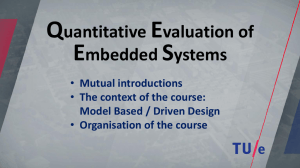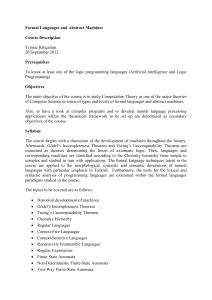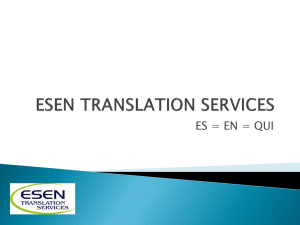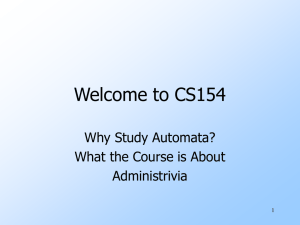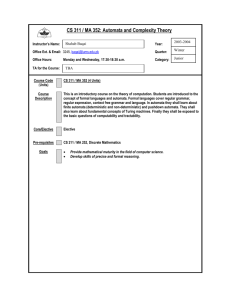Smart Scheduling of Streaming Software
advertisement
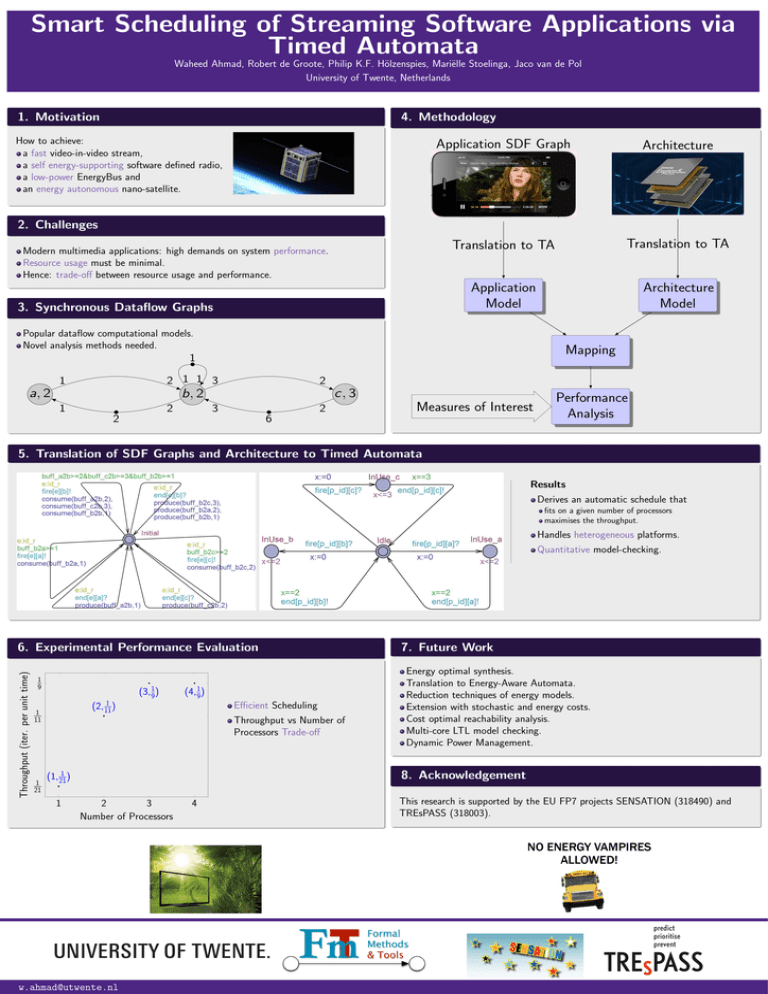
Smart Scheduling of Streaming Software Applications via Timed Automata Waheed Ahmad, Robert de Groote, Philip K.F. H¨olzenspies, Mari¨elle Stoelinga, Jaco van de Pol University of Twente, Netherlands 1. Motivation 4. Methodology How to achieve: a fast video-in-video stream, a self energy-supporting software defined radio, a low-power EnergyBus and an energy autonomous nano-satellite. Application SDF Graph Architecture Translation to TA Translation to TA Application Model Architecture Model 2. Challenges Modern multimedia applications: high demands on system performance. Resource usage must be minimal. Hence: trade-off between resource usage and performance. 3. Synchronous Dataflow Graphs Popular dataflow computational models. Novel analysis methods needed. Mapping 1 2 1 1 3 1 a, 2 2 c, 3 b, 2 1 2 2 3 2 Measures of Interest 6 Performance Analysis 5. Translation of SDF Graphs and Architecture to Timed Automata Results Derives an automatic schedule that fits on a given number of processors maximises the throughput. Handles heterogeneous platforms. Quantitative model-checking. Throughput (iter. per unit time) 6. Experimental Performance Evaluation 1 9 (3, 19 ) (2, 111 ) 1 11 1 21 (4, 19 ) Efficient Scheduling Throughput vs Number of Processors Trade-off Energy optimal synthesis. Translation to Energy-Aware Automata. Reduction techniques of energy models. Extension with stochastic and energy costs. Cost optimal reachability analysis. Multi-core LTL model checking. Dynamic Power Management. 8. Acknowledgement (1, 211 ) 1 7. Future Work 2 3 Number of Processors w.ahmad@utwente.nl 4 This research is supported by the EU FP7 projects SENSATION (318490) and TREsPASS (318003).




